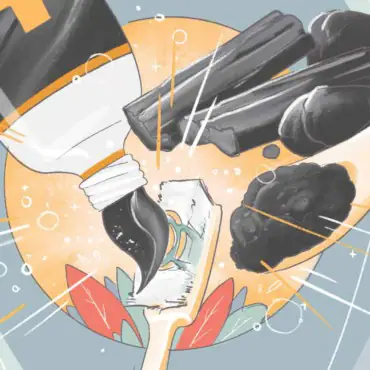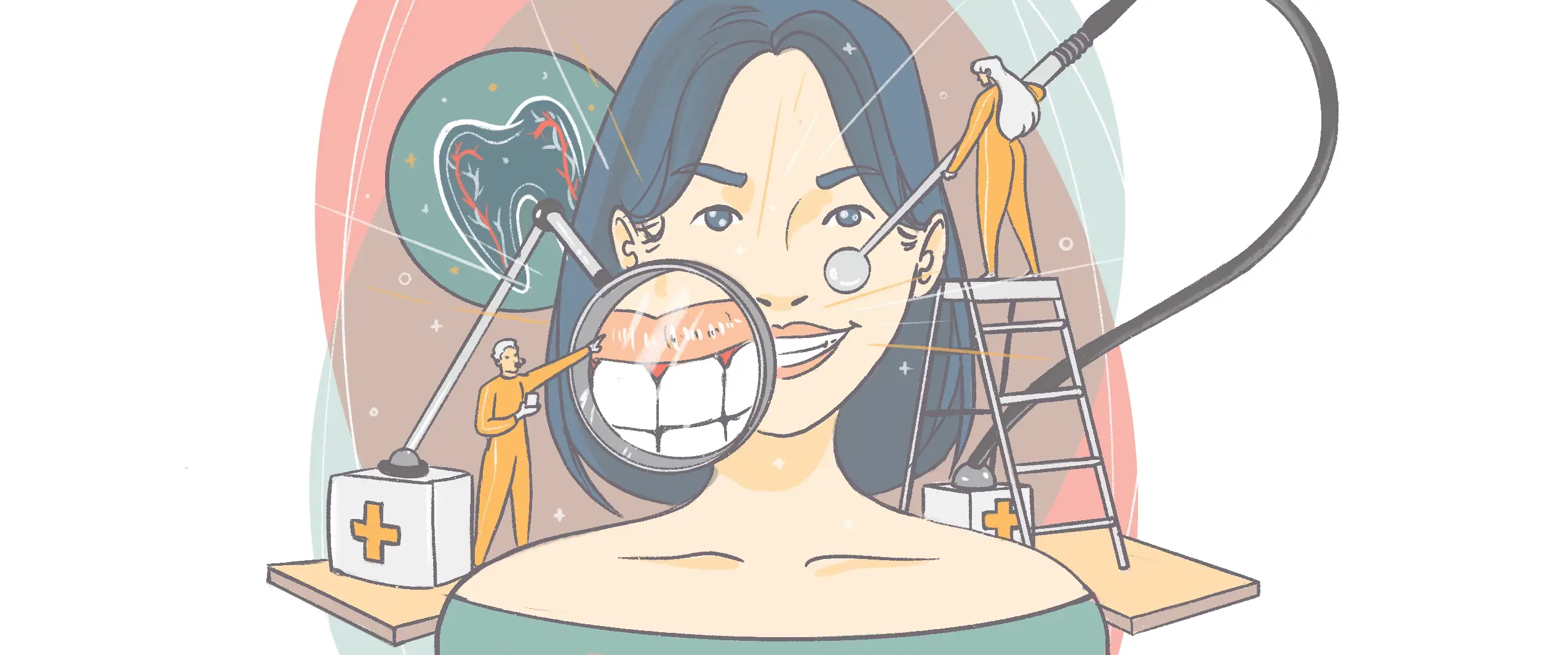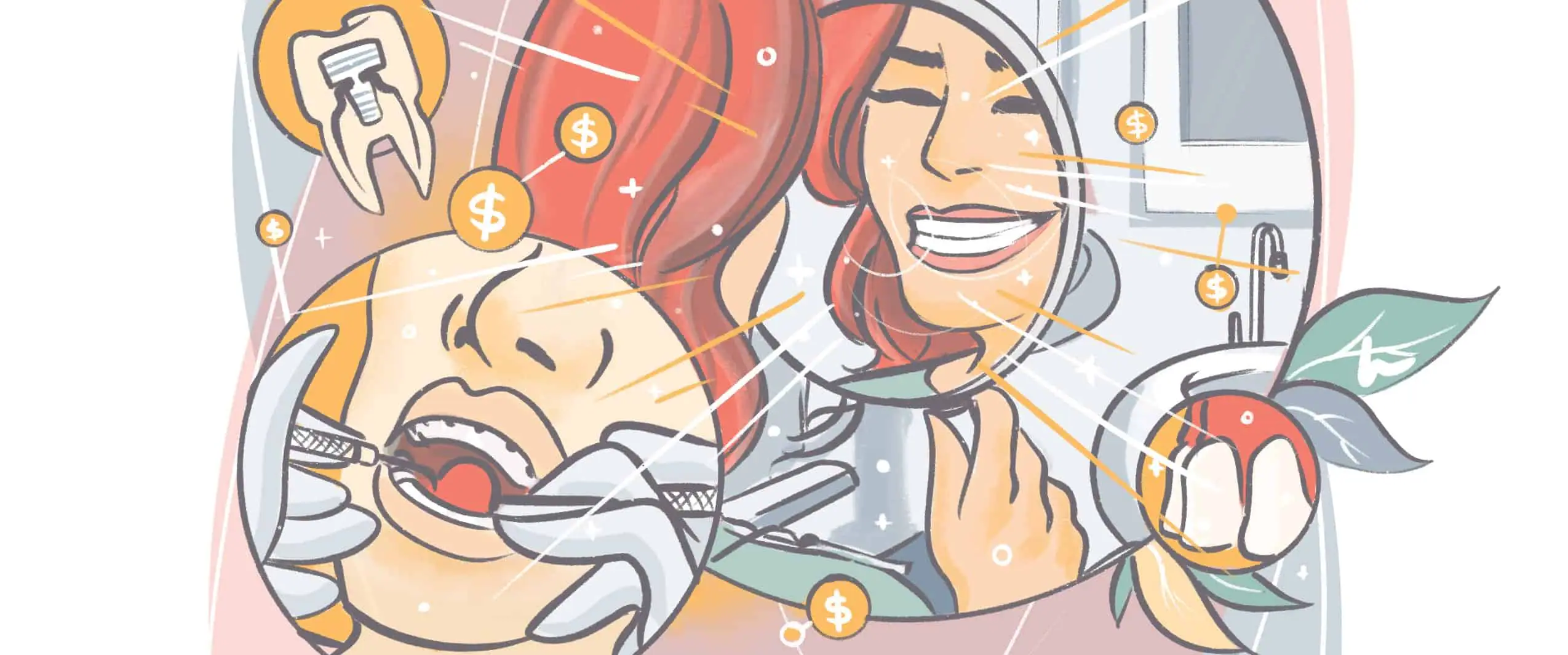Are you looking for a way to get straighter teeth without braces?
If you have an overbite, overcrowded teeth, or your front teeth are a little crooked, you may want to achieve a beautiful smile but without the metal brackets and wires associated with traditional braces.
Thankfully there are many orthodontic treatment options that will get your teeth into their correct position.
Can I straighten my teeth without braces?
Yes, there are a couple of ways to get straighter teeth without braces.
If your concern regarding braces is primarily aesthetic, you should know that you have several orthodontic treatment options.
For most people, alternatives like clear, custom-fitted aligners are effective in making your teeth straighter without braces.
If your concern is financial, then you should know that metal braces are still your best option.
How can I straighten my teeth at home?
There is no effective way to straighten your teeth on your own at home.When people try to straighten their own teeth without braces, they end up making things much worse.
People have caused all kinds of damage to their oral health through at-home dentist work. It’s easy to chip or fracture teeth, and you can also cause extensive, imperceptible trauma.
You risk causing serious nerve and bone damage. Many people have experienced tooth decay and even lost teeth after trying to get straighter teeth at home without braces.
An orthodontist will have to fix these issues with a more aggressive treatment plan.
There are alternative options, like Invisalign, which can give you straighter teeth without braces. However, you’ll still need to see a dentist to get your clear aligners.
Types of braces
Metal
Traditional braces use metal brackets, metal wire, and bands to place corrective tension on the teeth.
Metal brackets are bonded to the front teeth, the metal archwire is placed along them, then bands adhere the metal wire to the brackets. These braces are responsible for the iconic “metal-mouth” look.
Metal braces take around 24 months to effectively work. During that time, patients need to make regular dentist appointments for adjustments. Metal braces are progressively tightened to get the teeth where they should be.
Sometimes, orthodontic headgear will be used for bite correction and alignment. These orthodontic appliances increase the pressure and can speed up the teeth straightening process.
Ceramic
Ceramic braces are one of the more aesthetically pleasing choices. These brackets and wires come in clear, white, or tooth-matching colors. They’re a top choice for anyone wanting less obvious braces.
Unfortunately, ceramic brackets can be larger and bulkier than metal ones. This can sometimes cause gum irritation and sensitivities.
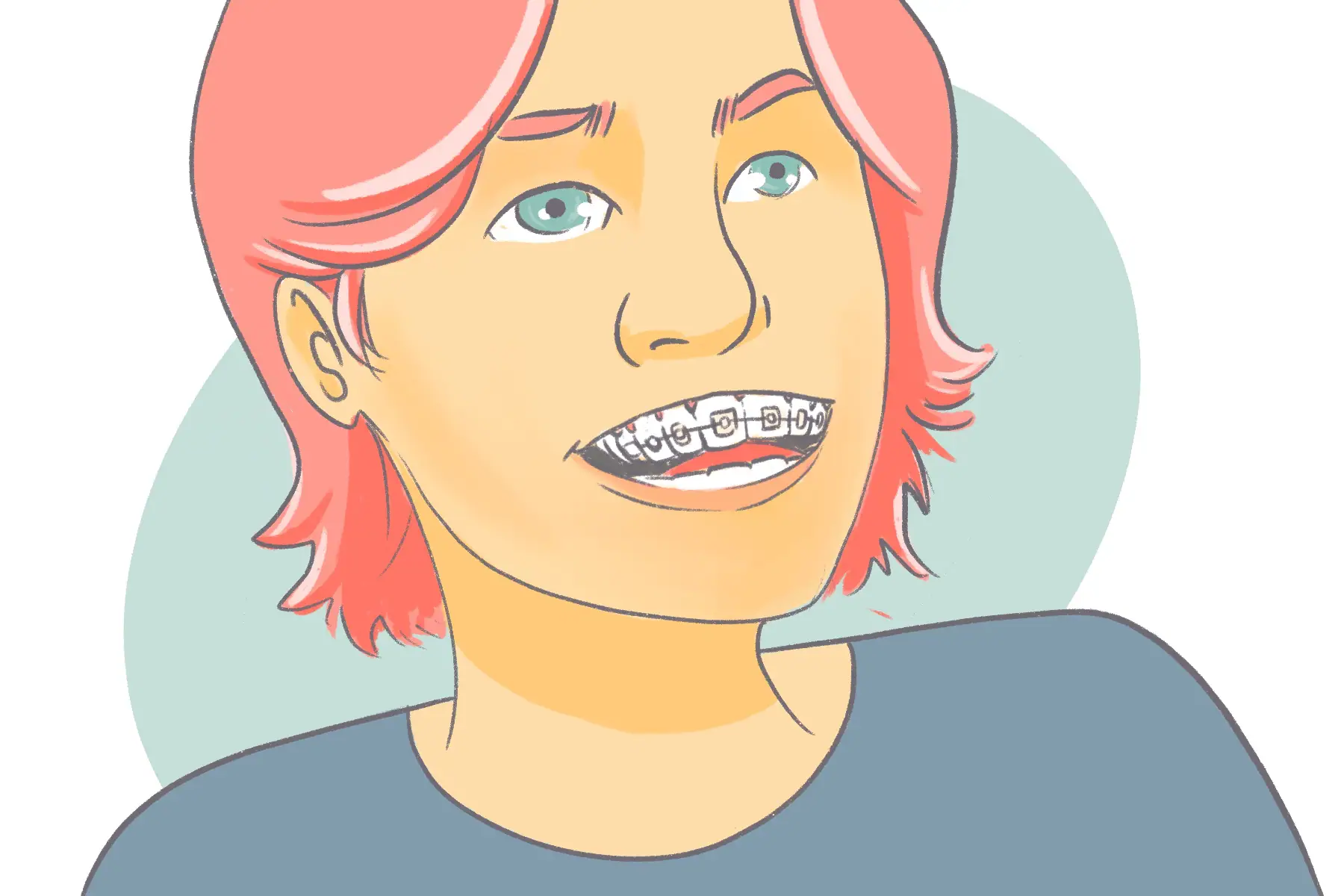
In addition, they need to be cleaned meticulously to avoid serious gum issues and to prevent staining.
Ceramic braces are not as durable as metal options. This extends the treatment time since less pressure can be put on them.
These braces are generally priced in between the cost of metal braces and Invisalign.
Self-Ligating or Damon Braces
Self-ligating braces use built-in clips with spring-loaded doors to provide corrective tension. These clips replace the elastic bands found in traditional metal braces.
Self-ligating braces can feel more comfortable than traditional archwire braces. This is because they need less tension to correct the teeth. This also speeds up the treatment time.
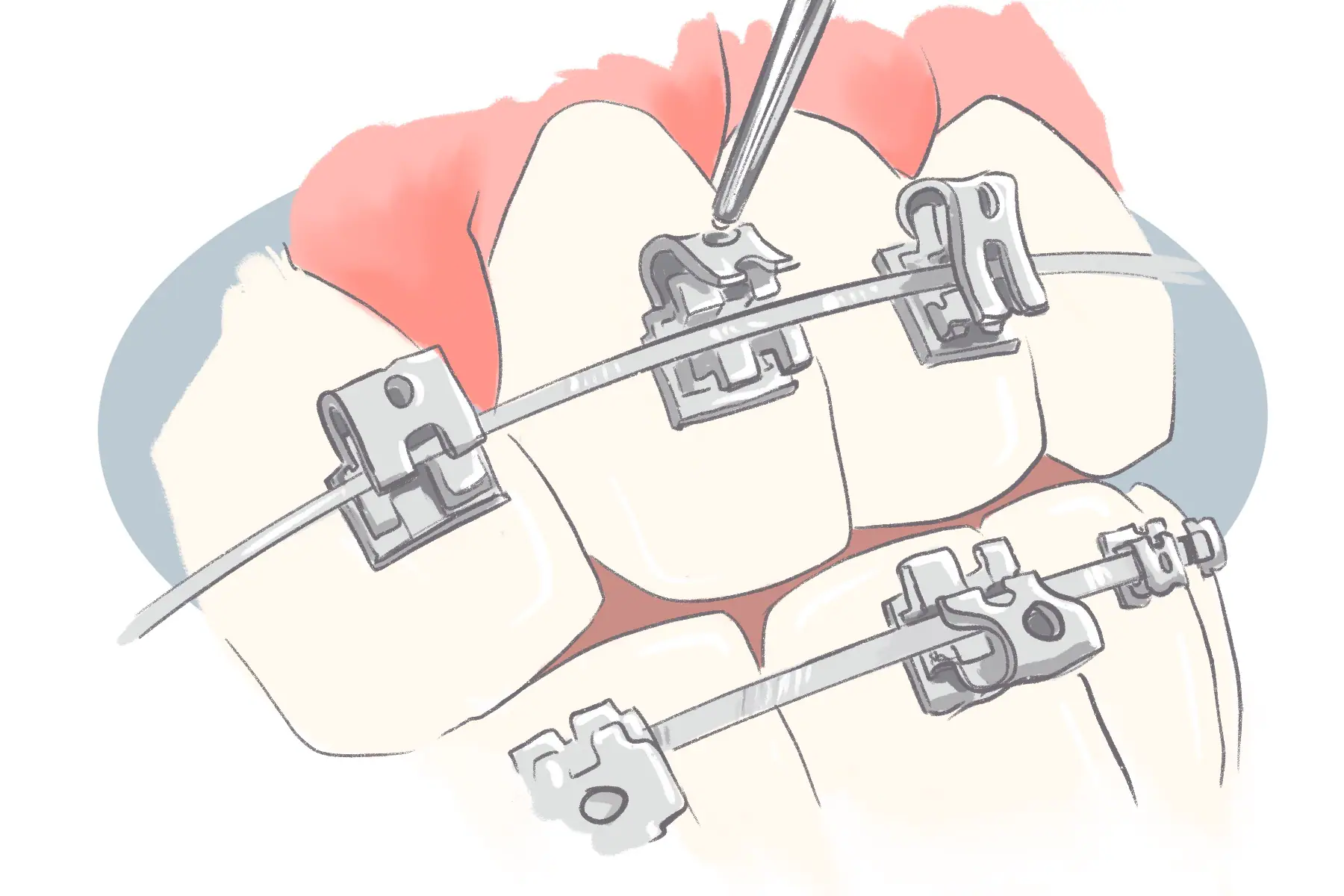
These braces allow the archwire to move freely, which lowers any friction.
There is also much less material placed in the mouth, making self-ligating braces easier to keep clean.
However, self-ligating braces are usually more expensive than traditional braces.
Lingual
Lingual braces are placed on the back of the teeth, inside the mouth. This makes them the perfect option for anyone who wants to hide their orthodontic care.
Other than their placement area, lingual braces work similarly to traditional ones. They’re still made of metal wires and brackets.
Lingual braces also require frequent dentist check-ups. They need to be adjusted regularly.

Lingual braces let you hide your braces, but they can be much less comfortable and difficult to care for than traditional options.
Lingual braces tend to irritate the tongue and gums. Some people get used to this feeling, while others feel discomfort throughout their entire treatment.
They can also be much trickier to keep clean. People wearing lingual braces need to learn how to brush and floss around these braces. There are mechanical difficulties in cleaning them, and it’s easy to miss spots you can’t see.
Lingual braces can also cost up to twice as much as conventional metal options.
Invisalign
Invisalign uses customized clear aligners to correct the placement of teeth over time.
The aligners are made of smooth plastic which don’t rub harshly against the cheek, teeth, or gums. This makes them far more comfortable than traditional braces.
Invisalign is easily removed for eating, cleaning, or even special occasions.
If you want to get Invisalign, you’ll need to find a dentist registered with them. This dentist will digitally scan your teeth, then send the measurements to the manufacturer to create individualized aligners.
The aligners need to be changed every two weeks. The total treatment time is usually around 12 to 18 months, but some people finish in around 6 months.
Invisalign is considered the best way to make your teeth straighter without braces.
Oral Surgery
In rare cases, oral surgery is needed to straighten teeth. This is done to correct serious skeletal issues like overbites, underbites, or misaligned jaws.
Specialized oral and maxillofacial surgeons perform these operations.
The recovery time is around two weeks, during which time the jaw may be wired shut.
Unfortunately, surgery isn’t a viable way to straighten teeth without braces.
Braces are often required after oral surgery. These are worn to perfect the final result and may need to be worn for 6 to 12 months.
Retainers may also be required to help straighten the teeth.
Can I use old retainers to shift my teeth back?
Retainers can only be used to slightly straighten teeth if they were provided by an orthodontist. Using old retainers to try and move teeth around can end up misaligning them even further.
Removable retainers should only be used according to your orthodontic treatment plan. If your teeth have shifted out of place, you’ll need to get dental care to bring them into a new position.
What is the cheapest way to straighten teeth?
Traditional metal braces are the cheapest way to straighten teeth. These typically cost between $2,500 and $7,500.
This can still be a costly expense. There are a few options to help make teeth straightening more affordable.
Insurance coverage ranges. Many only includes coverage for braces for children or minors. Other providers will cover metal braces in part or in full.
If you want to straighten your teeth for cosmetic reasons, this is unlikely to be covered by insurance.
Private financing is available for braces and other dental procedures.
Do you need to see a dentist?
If you want straight teeth and a beautiful smile, you need to see an orthodontist. The only way to correct crooked teeth is with professional dental care and a solid treatment plan.
Book a dental consultation.
Find a dentist near you to tell you more about getting started on this procedure.
Make an appointment with a dentist near you. Ask your dentist how to make your teeth straighter without braces.




